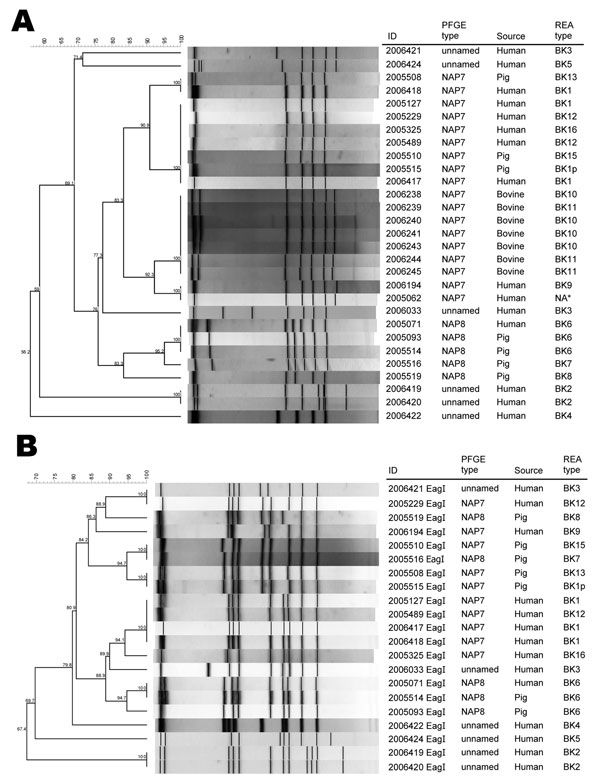Volume 14, Number 7—July 2008
Research
Toxinotype V Clostridium difficile in Humans and Food Animals
Figure 1

Figure 1. A). Dendrogram analysis of toxinotype V Clostridium difficile human and animal isolates using pulsed field gel electrophoresis (PFGE); SmaI restriction digest. Three animal-human isolate groups had indistinguishable PFGE patterns (2 NAP7 and 1 NAP8 group). Three of the NAP8 isolates (2005071, 2005093, 2005524) had identical REA types (BK6) as well. *PCR type unavailable. B) Dendrogram analysis using PFGE; EagI restriction digest. One human–pig pair (2005071 and 2005514) had identical PFGE patterns by both EagI and SmaI as well as identical REA patterns (BK6). Digestion of bovine isolates with EagI yielded results that were not interpretable and were not included in this figure.
Page created: July 12, 2010
Page updated: July 12, 2010
Page reviewed: July 12, 2010
The conclusions, findings, and opinions expressed by authors contributing to this journal do not necessarily reflect the official position of the U.S. Department of Health and Human Services, the Public Health Service, the Centers for Disease Control and Prevention, or the authors' affiliated institutions. Use of trade names is for identification only and does not imply endorsement by any of the groups named above.